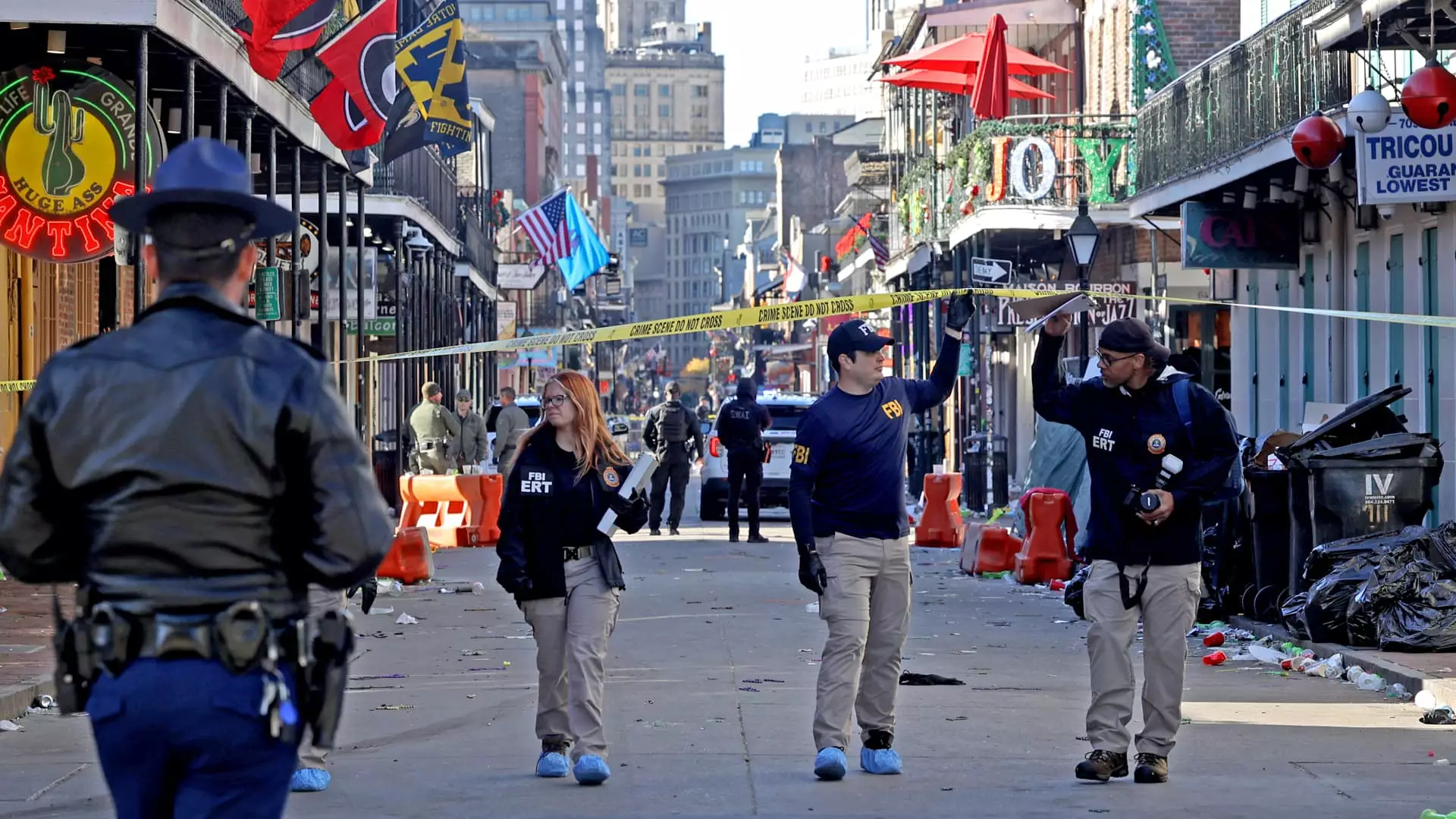The scene was set for celebration in the vibrant city of New Orleans, renowned for its jubilant streets filled with revelers on New Year’s Day. However, the culmination of festivity soon transformed into a chilling nightmare as violent events unfolded. Recent investigations have revealed an unsettling potential connection between two alarming incidents: a tragic car-rampage on Bourbon Street and a fiery explosion involving a Tesla Cybertruck outside Trump International Hotel in Las Vegas. Understanding the implications and details behind these incidents reveals a web of complex motivations and systemic failures that beckon scrutiny.
Bourbon Street, often dubbed the heart of New Orleans’ nightlife, turned into a massacre site early on January 1st. The aggressive drive of a pick-up truck, allegedly commandeered by 42-year-old Shamsud-Din Jabbar, resulted in 15 casualties and left more than 30 individuals injured. Eyewitness accounts portray a scene of devastation, with many unable to comprehend the violent intentions of the driver. Reports indicate that Jabbar had military experience, as he had served in the Army’s human resources and IT departments, hinting at a potential psychological crisis or deeper issues that drove him to commit such an atrocious act.
Hours after this incident, Las Vegas was rocked by an explosion involving a Tesla Cybertruck, inciting fears of a coordinated attack. Particular focus is being directed towards the possibility of ties among the perpetrators, as both Jabbar and the unidentified suspect from Las Vegas reportedly have military backgrounds. This connection potentially elevates these incidents beyond mere random acts of violence, suggesting a more insidious motive rooted in military training or ideology.
As investigations progressed, the FBI shifted its lens onto several threads linking these gruesome acts. Officials are delving into whether both incidents share more than just a time frame and geographical coincidence. The revelation that both vehicles were rented from the same Turo service raises significant questions about how easily accessible they were for individuals with ill intentions. Turo’s decision to actively cooperate with law enforcement illustrates the urgent need to address security in rental services—a significant oversight that needs robust rectification.
Authorities are also scrutinizing the venues where these events transpired. In New Orleans, immediate concern was brought to the absence of safety barriers intended to protect pedestrians from vehicular attacks. Mayor LaToya Cantrell stated that construction of these barriers was not yet complete, a revelation that angered residents and raised questions about public safety. As we continue to navigate unpredictable and dangerous times, complacency in urban safety measures is increasingly unacceptable, especially during high-capacity celebrations.
The aftermath of the New Orleans incident ignited a firestorm of sentiment among the local population. Mourning families flocked to the scene to pay respects, prompting public grief exacerbated by feelings of vulnerability. The stark contrast between celebration and loss underscores the fragility of life, especially in environments purportedly designed for enjoyment. In a moment when community resilience should take precedence, many are left questioning how this tragedy could have been prevented.
Simultaneously, the fear stemming from domestic terrorism remains palpable. As an incident linked with an ISIS flag rages in public discourse, the conversation regarding homegrown extremism takes on renewed significance. President Joe Biden’s acknowledgement of the situation highlights the necessity of vigilance within law enforcement agencies as well as community involvement. It calls for a collaborative response to preempt potential threats, as the synthesis of military training and radical ideology creates a volatile mix.
Facing the multifaceted challenges these festivals and events embody demands an immediate reevaluation of safety and law enforcement protocols on both local and national levels. As communities come together to heal, they must also assert the necessity of systemic change aimed at preventing such heinous acts in the future. Whether it involves bolstering community policing, fortifying event security, or instituting better regulations in rental services, the priority must remain clear: safety must be paramount.
As investigations into the chaotic connections between these events continue, society must remain vigilant, advocating for a culture of safety and resilience. The tragedy that tarnished the New Year’s Day celebrations is a grim reminder of the ongoing complexities surrounding violence, ideology, and community safety in America today. It is essential that we address these issues comprehensively, ensuring that our streets remain vibrant and safe for all.

Leave a Reply